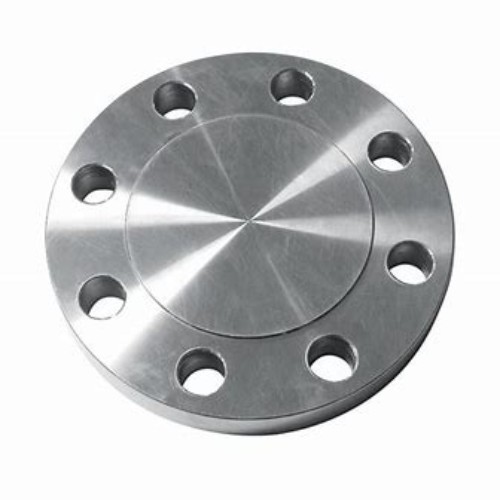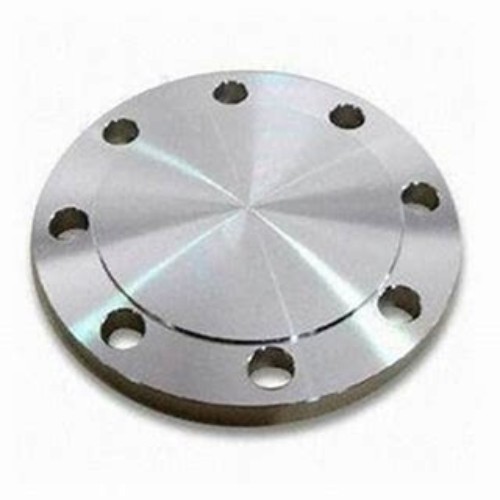High-Quality Blind Flange for Reliable Pipe Sealing Solutions
Blind flanges serve as critical components in pipeline systems across various industries, offering reliable sealing for unused pipe ends and connections. In this authoritative guide, we explore the intricacies of blind flanges—including blind pipe flange, stainless steel blind flange, and threaded blind flange—with special emphasis on the GOST 12836 PN 2.5 / PN4.0 Blind Flange. By presenting real market data, technical parameters, and deep insights, we offer a clear path for those seeking cutting-edge, reliable solutions.

Driven by growth in oil & gas, petrochemicals, and water treatment sectors, the global blind flange market is witnessing robust expansion. According to Grand View Research, the industrial flange market is projected to reach USD 6.5 billion by 2029, with blind pipe flanges comprising almost 21% of this segment due to their indispensable sealing function.
- Blind flange demand is rising in Asia-Pacific, attributed to infrastructure investments.
- Material upgrades—including stainless steel blind flange—enhance corrosion resistance for chemical, offshore, and marine use.
- Threaded blind flanges are preferred where welding or cutting is not feasible, facilitating rapid maintenance.
- Regulatory standards (ISO 7005-1, ANSI/ASME B16.5, GOST 12836) guarantee interchangeability and safety.
| Type | Pressure Rating | Material | Main Standards | Typical Application |
|---|---|---|---|---|
| Blind Pipe Flange | PN 2.5~PN 420 (ANSI Class 150~2500) |
Carbon Steel, Stainless Steel, Duplex Steel | ASME B16.5, DIN 2527, GOST 12836 | Pipeline Sealing & Isolation |
| Stainless Steel Blind Flange | PN 6~PN 250 | 304/304L, 316/316L, 321 | EN 1092-1, ISO 7005-1 | Chemical, Pharma, Offshore |
| Threaded Blind Flange | PN 16~PN 100 | Stainless Steel, Alloy Steel | ANSI B16.5, MSS-SP-44 | Maintenance, Skid Packages |
| GOST 12836 Blind Flange | PN 2.5, PN 4.0, PN 6.3 | Steel 20, 09G2S, SS304/316 | GOST 12836, ISO, API | Russian/CIS Oil, LPG, Steam |
- Increasing use of high-performance alloys (Duplex, Super Duplex) for blind flange under severe service conditions.
- Integration of RT/UT NDT techniques for 100% leakage detection and ISO 9001-certified QA procedures.
- Rising custom flange fabrication requirements due to bespoke project needs.

(Steel 20, 09G2S, SS304/316)
Creating basic flange shape
Normalizing/tempering for toughness
Precision drilling, facing
Dimensional, RT/UT & hydro test
ISO/EN Packing Standards
- Process: Forged or cast per GOST 12836; CNC-machined sealing surfaces achieve 12.5μm accuracy.
- Heat Treatment: Ensures grain refinement for lasting ductility.
- Inspection: Hydrostatic test at 1.5x PN rating; RT/UT (Radiographic/Ultrasonic Testing) for weld seams as per ISO 9001.
- Packing: Wooden crate, with desiccant and customized labeling for traceability.
| Type | Nominal Size (DN) | Pressure (PN) | Material | Sealing Face | Temperature Range | Certifications |
|---|---|---|---|---|---|---|
| Blind Flange | DN10 to DN1500 | 2.5MPa, 4.0MPa | Steel 20, 09G2S, SS304, SS316 | Raised Face (RF), Flat Face (FF) | -40°C to +550°C | GOST 12836, ISO 9001 |
Watch Typical Blind Flange Forging Process (YouTube)
-
Material Selection:
- Carbon Steel (Steel 20, 09G2S): Cost-effective, ideal for general fluids.
- Stainless Steel (SS304/316/321): Superior corrosion/acid resistance for harsh chemicals and offshore applications.
- High Alloy Flanges: Duplex/Super Duplex, Nickel alloys (on request for H2S, chlorine service).
- Sealing Face Options: Raised Face (RF), Flat Face (FF), Ring Type Joint (RTJ) as per ISO 7005-1 for optimal leak-tightness.
- Machining Precision: All surfaces CNC machined with ±0.15mm tolerances; Gasket rings to Ra 3.2μm.
- Pressure Endurance: Factory tested up to 1.5x rated PN, with documented hydrostatic/air testing.
- Long Lifespan: Service life exceeds 25 years in most medium-duty and high-pressure water/steam systems.
- Standards Compliance: Fully compliant with GOST, ISO, and API requirements. PMI (Positive Material Identification) on request.
- HBYS Valves is ISO 9001:2015 certified, with all blind flanges traceable via batch QC documentation.
- Adheres to EN 10204 3.1/3.2 inspection certificates for European/Eurasian clients.
- Partners include Gazprom, Lukoil, Siemens, Sinopec; product approvals from SGS and TUV Rheinland.

Comparing top blind flange manufacturers, clients can optimize costs and delivery via strategic sourcing:
| Manufacturer | Main Standards | Max Size (DN) | Delivery Lead Time | Certifications |
|---|---|---|---|---|
| HBYS Valves | GOST, ISO, ASME, DIN | DN1500 | 15 ~ 25 days | ISO 9001, TUV, SGS |
| Bonney Forge (Italy/USA) | ASME, EN, API | DN1200 | 25 ~ 35 days | API, ISO 9001 |
| Haihao Group (China) | GOST, EN, ASME, JIS | DN1200 | 20 ~ 30 days | ISO, CCIC |
| Vallourec (France) | ISO, EN, API | DN1400 | 35 ~ 45 days | ISO, PED |
- Submit technical drawing / project requirement (pressure, size, medium).
- HBYS issues 3D design & material proposal within 48 hours.
- Client confirms, production within 7-21 days depending on complexity.
- 100% inspection & logistics tracking until onsite delivery.
Challenge: High sulfur, offshore gas line sealing.
Solution: HBYS supplied GOST 12836 PN4.0 stainless steel blind flange, NACE MR0175 compliant.
Result: Zero leakage, corrosion-free for 4+ years.
2. District Heating Pipeline, North Europe
Challenge: Large diameter (DN1200), 16 bar, cyclic temp flanges.
Solution: Custom forged blind pipe flanges with graphite gaskets.
Result: No failures after >20,000 thermal cycles.
3. Pharmaceutical Process, India
Challenge: CIP (clean-in-place), high purity requirements.
Solution: Threaded blind flange, SS316L, electropolished (FDA standard referenced)
Result: Passed FDA GMP audit, enhanced hygienic sealing.
1. What materials are most common for blind flanges?
2. How are blind pipe flanges installed and what standards apply?
3. What do the pressure ratings (PN 2.5 / PN4.0) signify?
4. What corrosion-resistant coatings are available for blind flanges?
5. How to select between stainless steel blind flange vs carbon steel?
6. What is a 'threaded blind flange' and when is it used?
7. Are all blind flanges pressure tested prior to shipping?
- Delivery Time: Standard DN15–DN600 flanges: 7–20 working days. Large/custom items: up to 28 days. Emergency rush orders available (contact HBYS for schedule).
- Warranty: All blind flange products are backed by a 24-month quality guarantee, with lifetime tech support. PMIs & certificates provided on request.
- Customer Support: 24/7 hotline, WhatsApp, and online portal tracking from order to delivery. Pre-sale engineering assistance included.
- After-Sales Service: Free technical troubleshooting, replacement for any confirmed manufacturing defect, and remote/onsite inspection support for international customers.
- Certification Documents: MTC–EN 10204/3.1, NDT, ITP (inspection/testing plan), and logistics reports supplied with every shipment.
The blind flange—including blind pipe flange, stainless steel blind flange, and threaded blind flange—will remain a backbone for sealing and pressure containment across evolving industry sectors. With certified manufacturing, rigorous QA, and multifaceted application experience, HBYS Valves and global leaders continue to advance blind flange technology for user safety and cost efficiency.
-
The Key to Fluid Control: Exploring the Advantages of Ball Valves in Industrial SystemsNewsJul.09,2025
-
The Versatile World of 1, 2, and 3 Piece Ball ValvesNewsJul.09,2025
-
Stainless Steel Ball Valves: The Ideal Choice for Efficient Flow ControlNewsJul.09,2025
-
Optimizing Fluid Control with Ball Float ValvesNewsJul.09,2025
-
Manual Gate Valves: Essential for Control and EfficiencyNewsJul.09,2025
-
Everything You Need to Know About Butterfly ValvesNewsJul.09,2025
-
The Versatility of Wafer Type Butterfly ValvesNewsJul.08,2025




